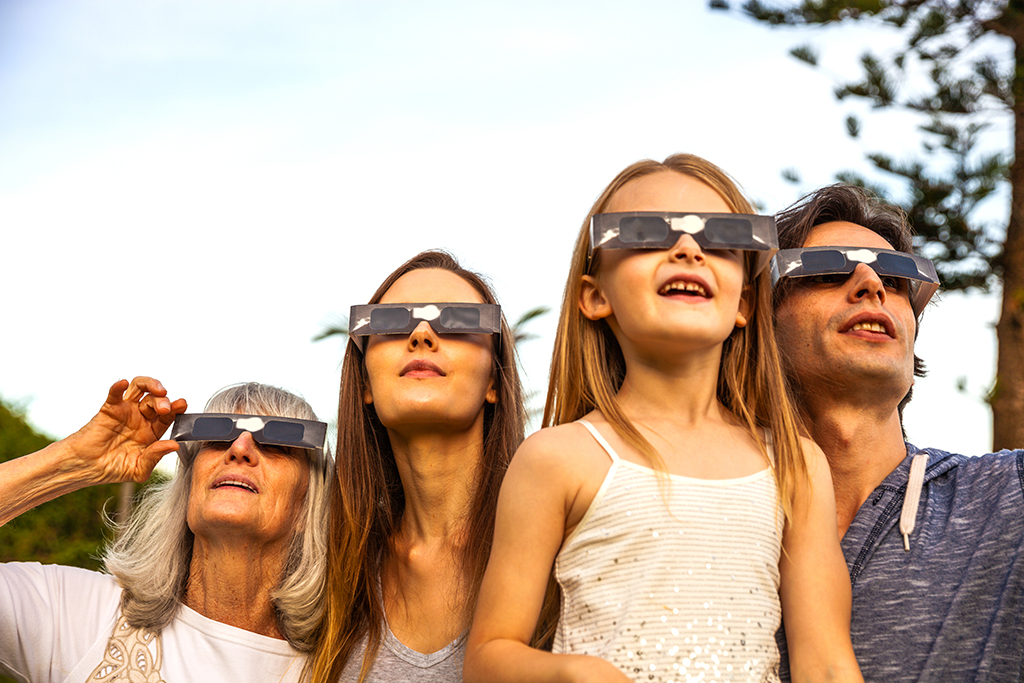The Eastern Ontario Health Unit (EOHU) is reminding the public to take some simple precautions to stay safe and protect their eyes as the region is in the path of a solar eclipse that will take place on April 8, 2024, between approximately 2 p.m. and 4:30 p.m.
The City of Cornwall, Akwesasne and parts of the Counties of Stormont, Dundas, and Glengarry will be in the path of totality, meaning they will be able to see the moon completely cover the sun. This will result in night-time darkness for approximately 2 minutes and 15 seconds at 3:25 p.m. The rest of the Counties of Stormont, Dundas, and Glengarry, as well as the Counties of Prescott and Russell, will experience a partial eclipse.
To see if your area is in the path of totality, visit www.timeanddate.com/eclipse/map/2024-april-8.
How to watch the solar eclipse safely
The solar eclipse will be a historic event that will attract the gaze of locals as well as many visitors who will flock to the area for the spectacle in the sky. The EOHU is reminding everyone that viewing the sun with your naked eye during the eclipse can burn your retina, damaging the images your brain can view. Given that the eye damage that can occur is not painful, people may not realize their eyes are being damaged until symptoms appear 12 to 48 hours later. Symptoms can include retinal burns, permanent or temporary visual loss, and blurred vision.
Eye protection that meets the ISO 12312-2:2015 safety standard is needed to protect your eyes from serious, and sometimes permanent damage. You must take precautions to protect your eyes and prevent damage whether you are in the path of totality, or where there will be a partial eclipse.
When looking for eye protection:
- Make sure it meets the ISO 12312-2:2015 safety standard and that it has the manufacturer’s name and date of production on it.
- Ensure that eclipse glasses fully cover your field of vision.
- Put on glasses when looking away from the sun, then look at the eclipse. Look away from the sun before taking the glasses off.
- Do not use a viewer if it has scratched or wrinkled lenses.
- Do not use regular sunglasses, cameras, phones, binoculars, or telescopes to watch the eclipse, as they do not provide adequate protection.
- Do not use homemade filters.
Alternative methods to watch the eclipse
If you don’t have the required eye protection, you can also watch the eclipse indirectly through an eclipse box, pinhole projector, or livestream. Livestreams of the eclipse, such as the one hosted by NASA on YouTube, are a safe way to view the eclipse without the risk of injury from misusing equipment. If you will be watching the eclipse with children, supervise them to ensure they do not look at the eclipse without proper eye protection.
Take extra care if driving during the eclipse
From about 2 p.m. to 4:30 p.m., the eclipse will affect daylight as it progresses. Exact times will depend on the viewer’s precise location. The following traffic safety measures are recommended:
- Don’t stop on the shoulder of the road.
- Don’t take photographs while driving.
- Turn on your headlights.
- Watch out for pedestrians.
For more information about how to safely enjoy the eclipse, visit EOHU.ca/eclipse. If you experience blurred vision, or loss of vision after viewing the eclipse, please contact your health care provider or Health811.



